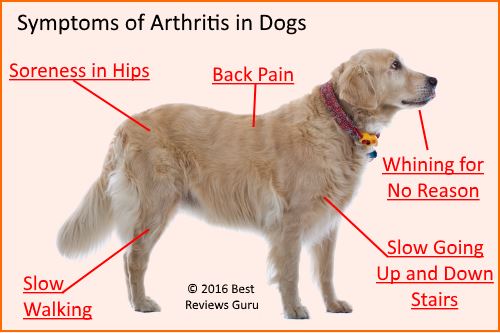Managing Canine Joint Pain
 Winter is definitely a more common time to start noticing joint pain and discomfort in your pet. Your dog may experience a more difficult time getting up, or down, may have more difficulty on slick, slippery surfaces, or stairs, or seem stiff after resting. Arthritis is the most common cause of these signs. The most common type of canine arthritis is degenerative joint disease, affected approximately 1 out of every 5 dogs in the united states.
Winter is definitely a more common time to start noticing joint pain and discomfort in your pet. Your dog may experience a more difficult time getting up, or down, may have more difficulty on slick, slippery surfaces, or stairs, or seem stiff after resting. Arthritis is the most common cause of these signs. The most common type of canine arthritis is degenerative joint disease, affected approximately 1 out of every 5 dogs in the united states.
Osteoarthritis occurs when the cartilage cushion protecting the bone surface in the joints is degraded and destroyed. This causes friction, and leads to pain, and ultimately decreased mobility. The most commonly affected joints in the dog are the hips, elbows, lower back, knees and wrists. The common factors that can lead to a dog developing arthritis include aging, joint disorders such as hip dysplasia, repeated injuries or trauma, high activity levels, obesity, and some metabolic disorders such as diabetes or Cushing’s disease.
Common canine symptoms of arthritis can include stiffness, limping, changes in activity or appetite, reluctance to walk, run or climb stairs, and sometimes behavioral changes and irritability. Often, owners are not even aware that their pet is suffering from arthritis, but a veterinarian can often diagnosis arthritis based on your dog’s age, medical history, and a physical exam. X-rays of the joints may be necessary to determine severity of disease.
 There is no one single effective treatment for arthritis. It is often a combination of medications, exercises, diet, and weight loss. Every pet responds differently. Important non-medical approaches to minimizing arthritis pain can include weight control, diet changes, exercise, and sometimes focused rehabilitation treatments. Weight control is important because if your dog can achieve a more healthy weight for their size, it will decrease the load the affected joints have to bear, minimizing lameness, and improving mobility. There are dietary supplements that can help alleviate some minor arthritic aches and pain, similar to people. There are many canine friendly formulations of glucosamine, chondroitin sulfate, and fatty acids that can help reduce some joint inflammation. There are even special prescription diets, with these formulations built in to improve joint health. Regular, light to moderate exercise can help keep stiff joints more mobile. Different levels of exercise may be recommended depending on the pet, and how much discomfort they are experiencing. Canine physical rehabilitation is an emerging area for joint arthritis. Rehabilitation therapies can include underwater treadmills, massaging, laser therapy, ultrasound therapy, electric stimulation, massage, stretching and range-of-motion therapies.
There is no one single effective treatment for arthritis. It is often a combination of medications, exercises, diet, and weight loss. Every pet responds differently. Important non-medical approaches to minimizing arthritis pain can include weight control, diet changes, exercise, and sometimes focused rehabilitation treatments. Weight control is important because if your dog can achieve a more healthy weight for their size, it will decrease the load the affected joints have to bear, minimizing lameness, and improving mobility. There are dietary supplements that can help alleviate some minor arthritic aches and pain, similar to people. There are many canine friendly formulations of glucosamine, chondroitin sulfate, and fatty acids that can help reduce some joint inflammation. There are even special prescription diets, with these formulations built in to improve joint health. Regular, light to moderate exercise can help keep stiff joints more mobile. Different levels of exercise may be recommended depending on the pet, and how much discomfort they are experiencing. Canine physical rehabilitation is an emerging area for joint arthritis. Rehabilitation therapies can include underwater treadmills, massaging, laser therapy, ultrasound therapy, electric stimulation, massage, stretching and range-of-motion therapies.


No comments:
Post a Comment